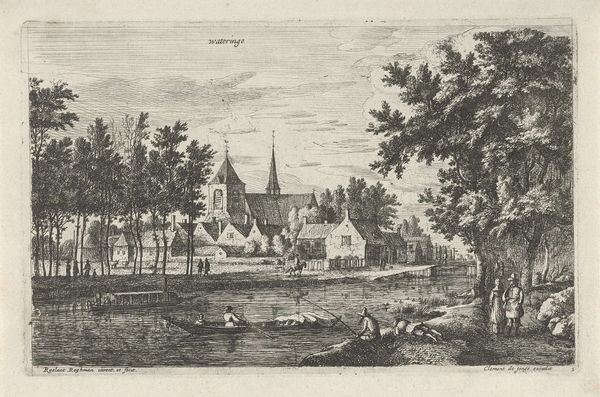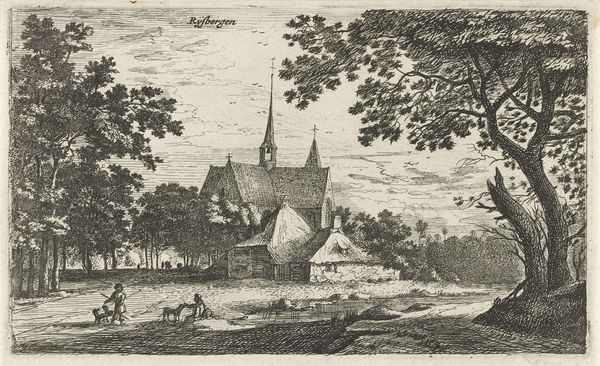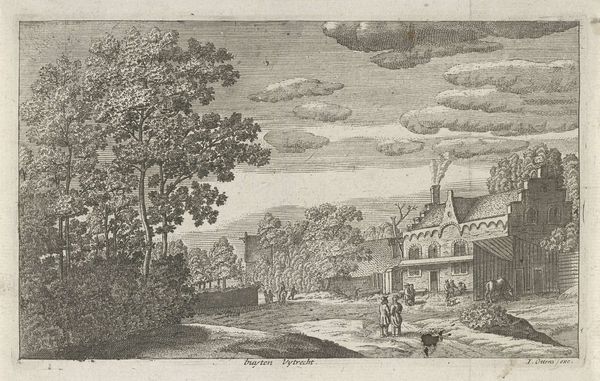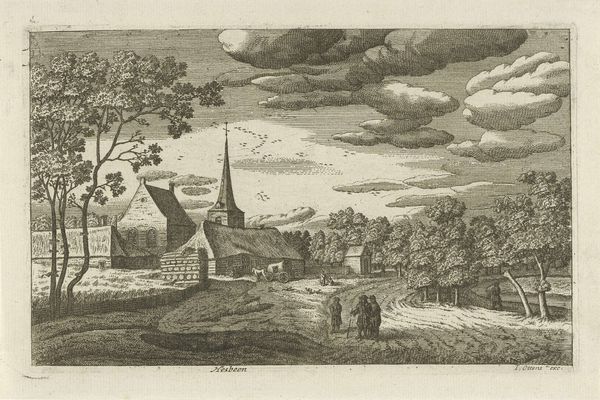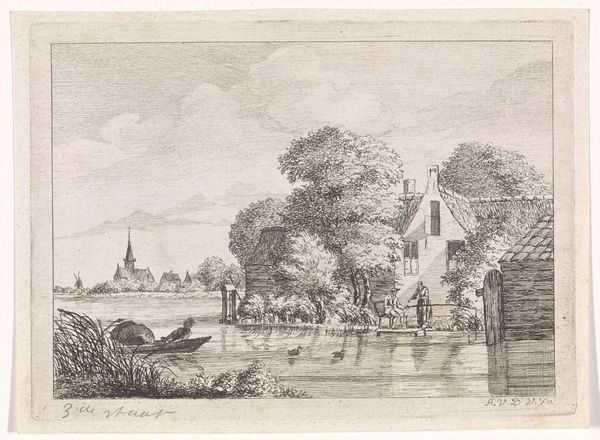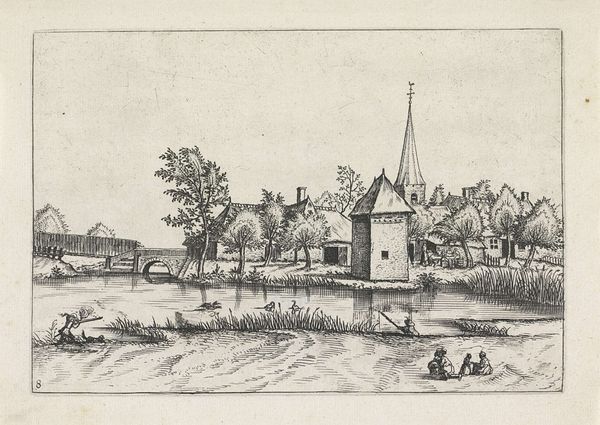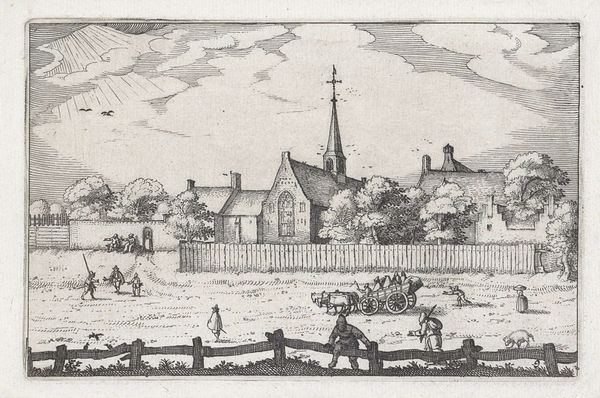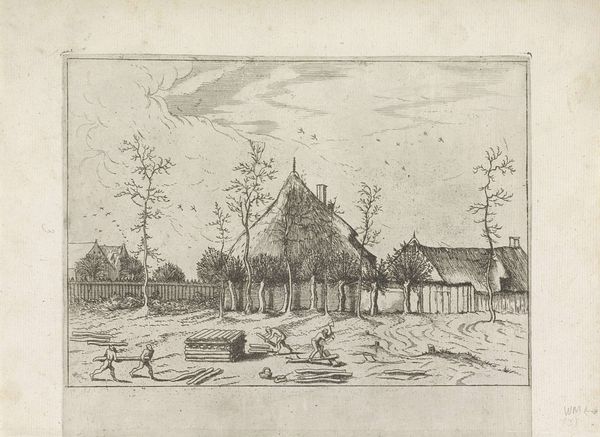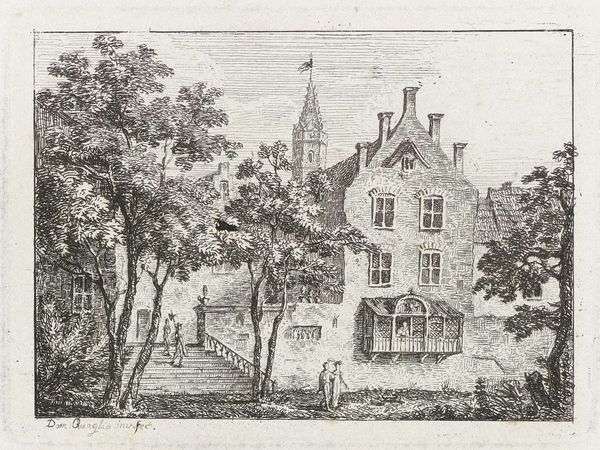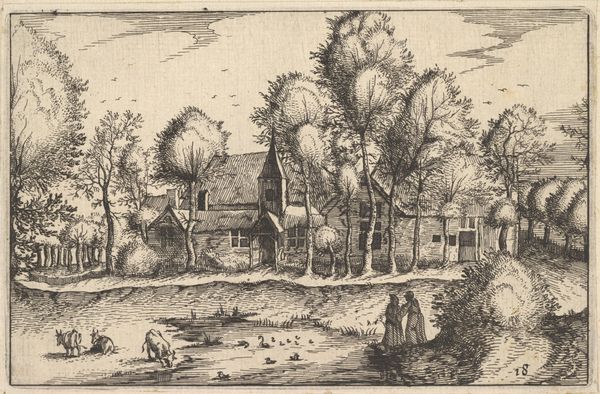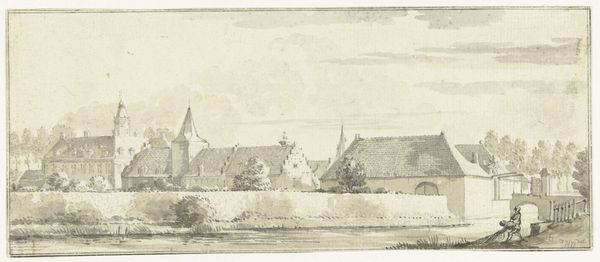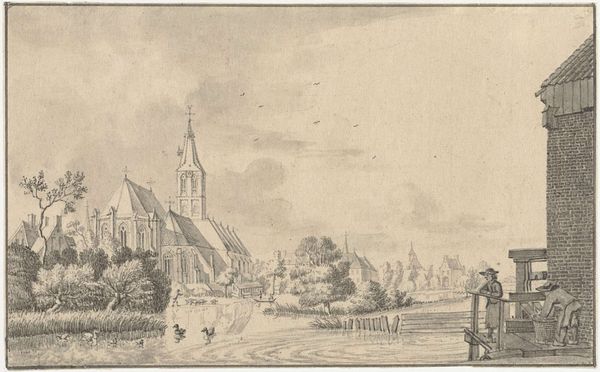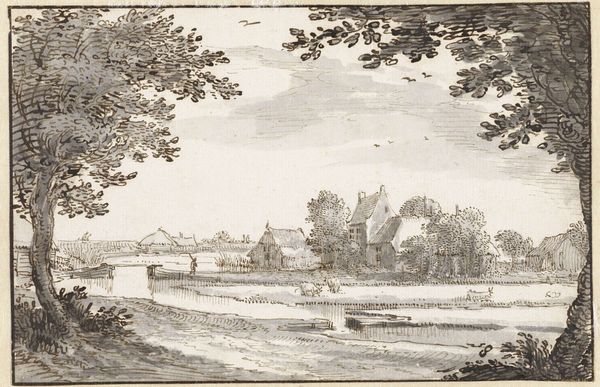
drawing, print, etching, ink
#
drawing
#
dutch-golden-age
# print
#
etching
#
landscape
#
river
#
ink
Dimensions: height 134 mm, width 207 mm
Copyright: Rijks Museum: Open Domain
Curator: This etching, titled "Gezicht op Wateringen", offers a glimpse into the Dutch Golden Age through a landscape perspective. Though the artist is anonymous, it's been dated between 1637 and 1742. You'll notice it's made using ink on paper, a popular print medium. Editor: It's deceptively tranquil, isn’t it? At first glance, it looks like a simple pastoral scene, but there's an underlying tension in the composition. The contrast between the delicate lines and the heavier inked areas almost creates a sense of unease despite its realistic style. Curator: It really is all about process, isn’t it? The precision of the etching, the laborious act of creating those fine lines – it speaks to the craftsmanship valued during this era. These prints, readily available, played a vital role in distributing imagery, shaping perceptions of both the landscape and societal values. Editor: Absolutely. And what's fascinating to me is the depiction of labor, seen from different classes scattered throughout. Fishermen are actively engaged along the riverbank, and yet further off, individuals can be seen more passively travelling and watching the daily activities. Curator: Yes, those elements certainly provide depth. Consider the social implications of the river itself – it's a source of sustenance, transport, trade. All facets that highlight the importance of water, and therefore control of resources. Who is benefitting? And how? Editor: The figures clustered on the right side seem to be engaged in leisure, potentially reflecting a class division. Who had time to recreate near this water source? This visual rhetoric reveals a socio-economic stratification woven into what appears to be a simple waterside scene. Even that steeple in the distance seems symbolic, marking religion, another system, governing and overlooking society. Curator: True. From a production standpoint, think about the accessibility of prints like these. Were they consumed differently by various classes? Could a print like this, replicated and distributed, contribute to shared cultural values, perhaps promoting specific notions of Dutch identity and the relationship with the landscape and those who engage with its resources? Editor: It could. Considering the ongoing issues of colonialization by the Dutch East India Company, can we truly view this as "simple?" Even here, on seemingly placid soil, systems of power are playing out in a global theatre of extraction, subjugation and resource exploitation. The visual calmness is almost… deceptive. Curator: It's thought-provoking to reconsider what "Gezicht op Wateringen" signifies in a broader context. We move from a snapshot in time to something speaking to enduring legacies. Editor: Exactly. By layering these perspectives, we unlock deeper questions. Even within a landscape like this. The artwork now invites more than mere observation; it asks for introspection and a critical gaze toward what is just outside of the picture plane.
Comments
No comments
Be the first to comment and join the conversation on the ultimate creative platform.
